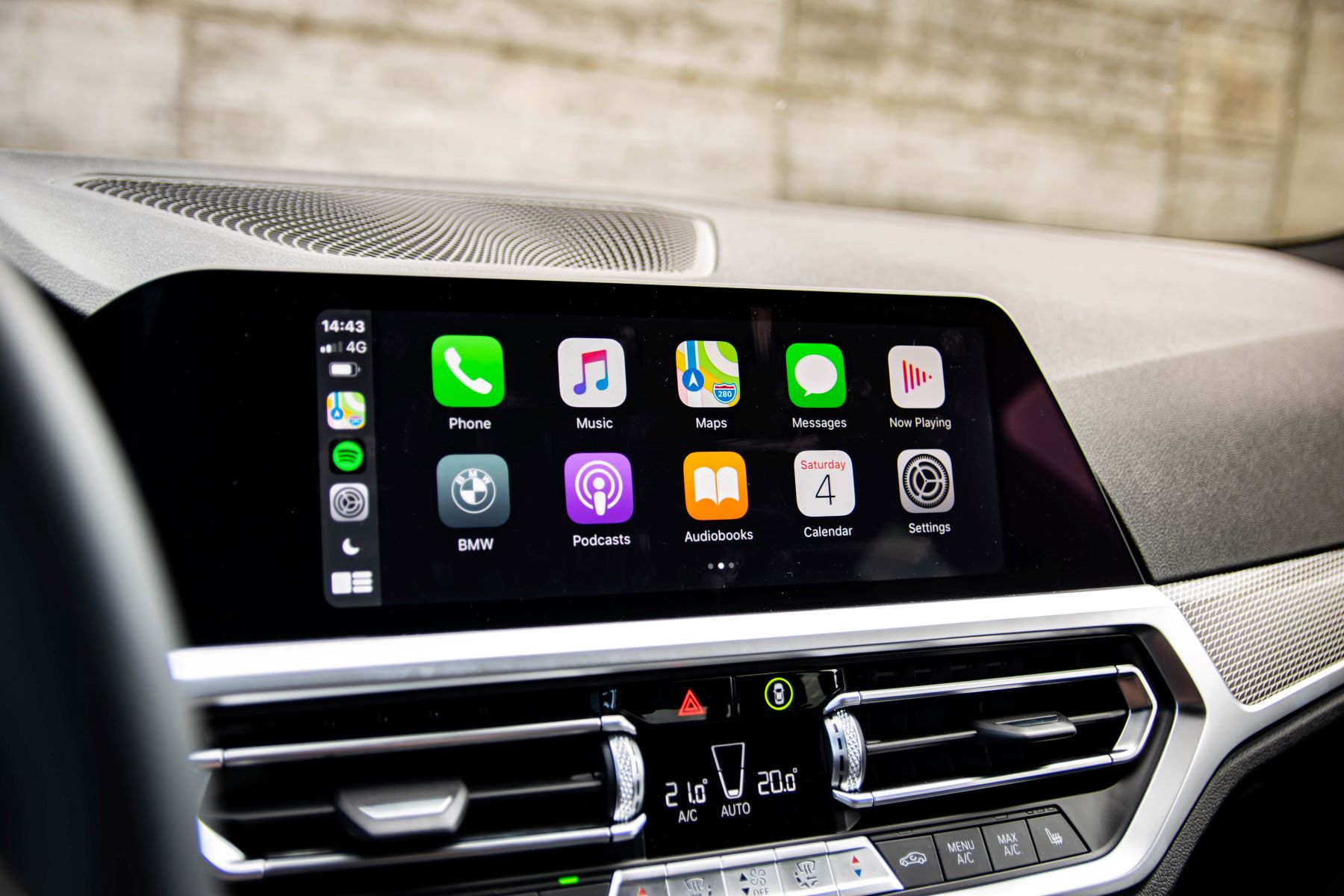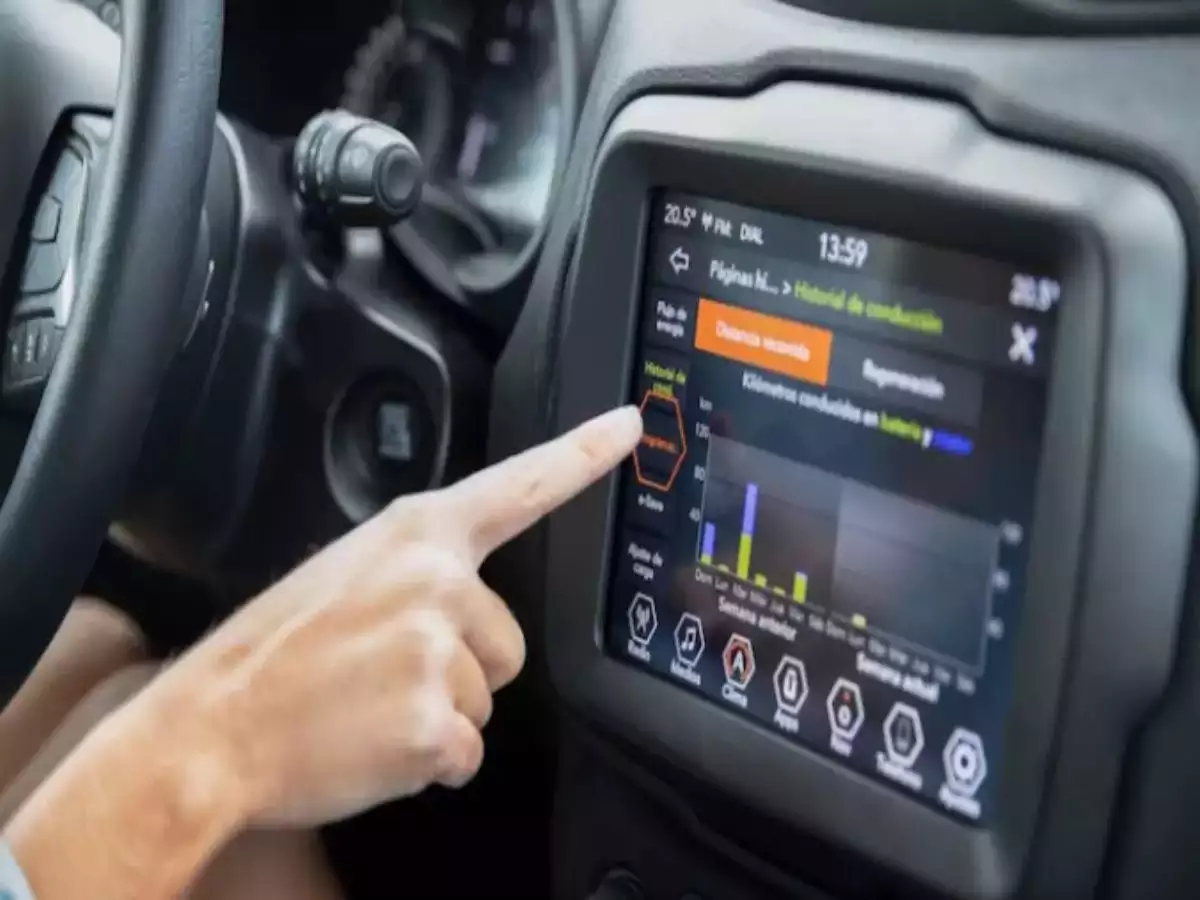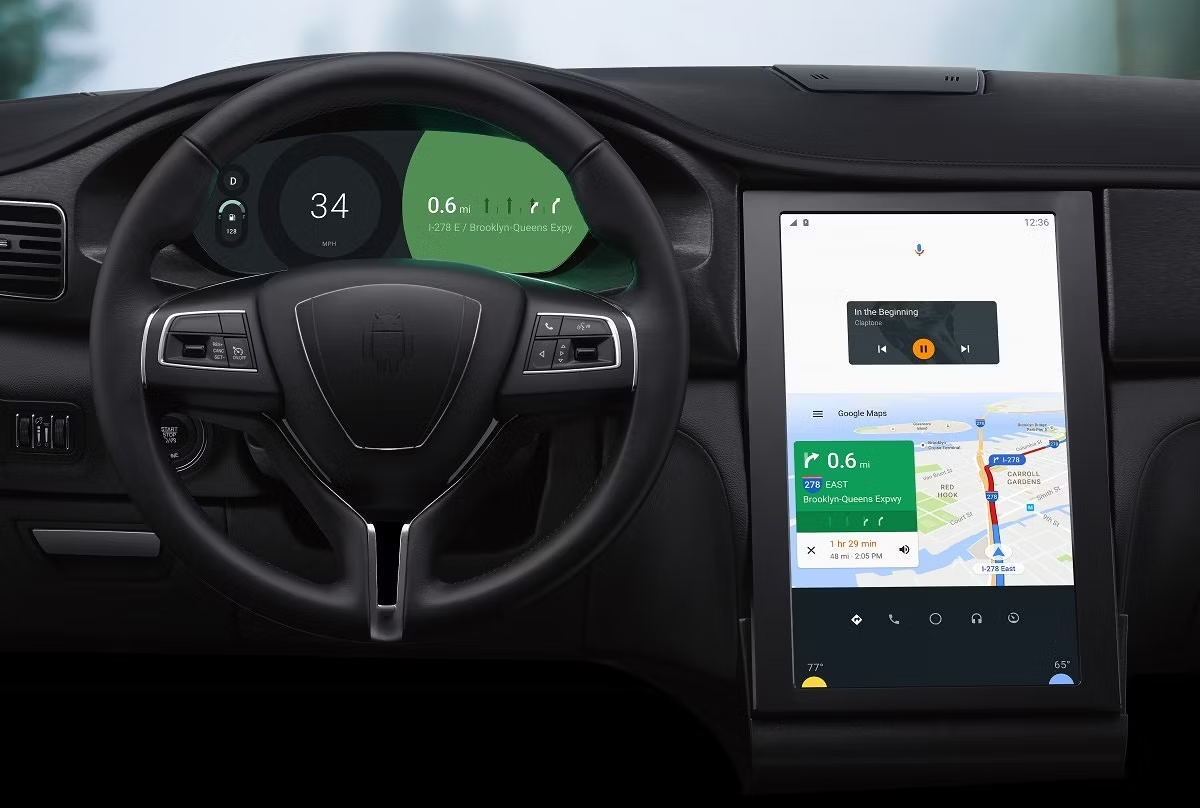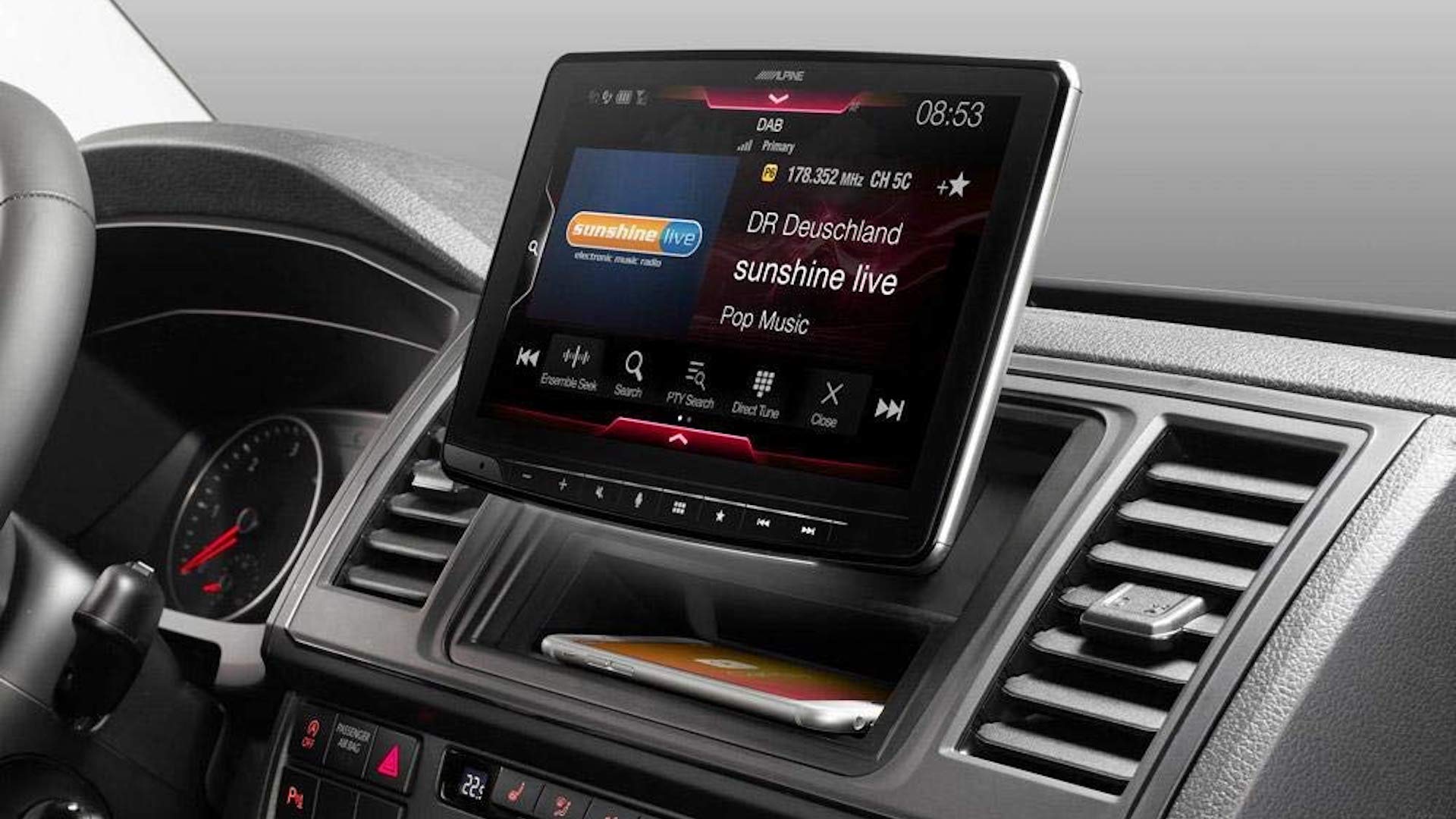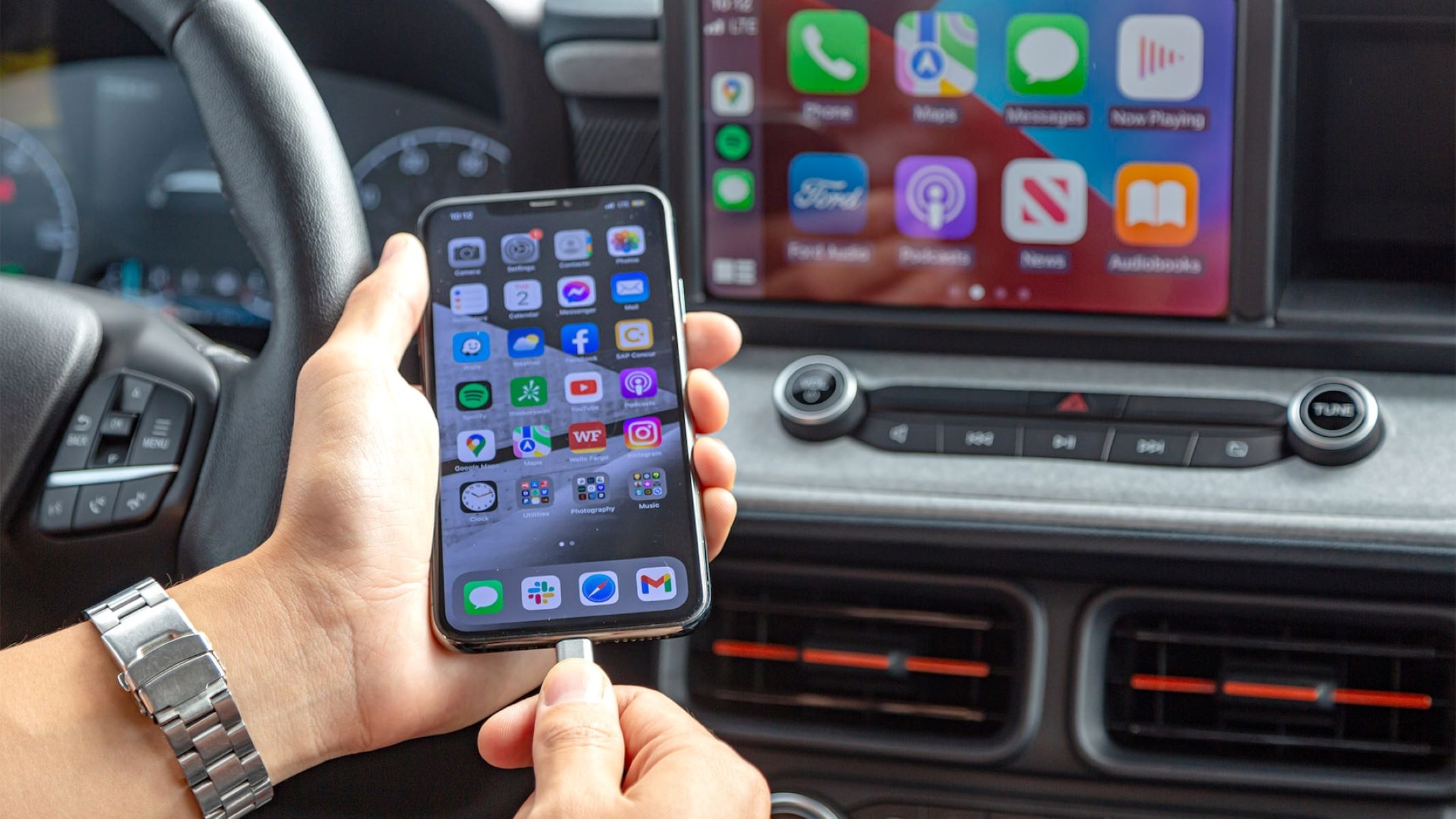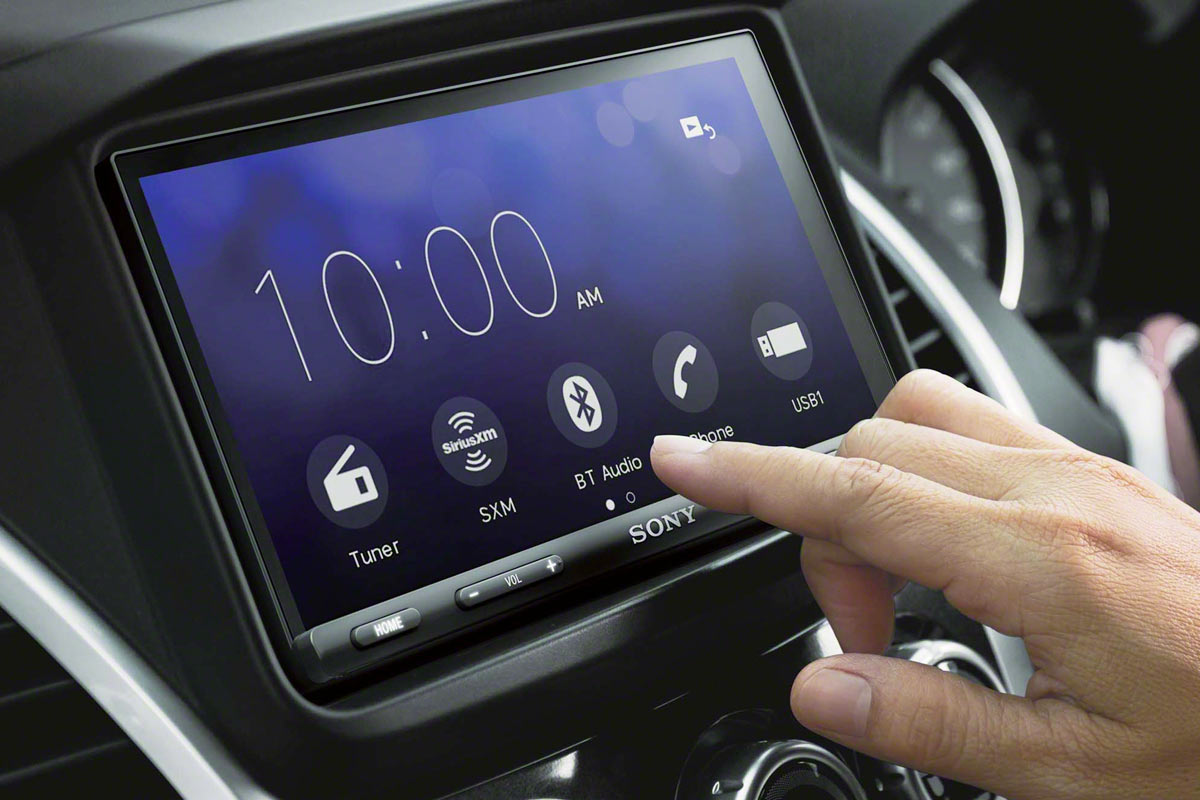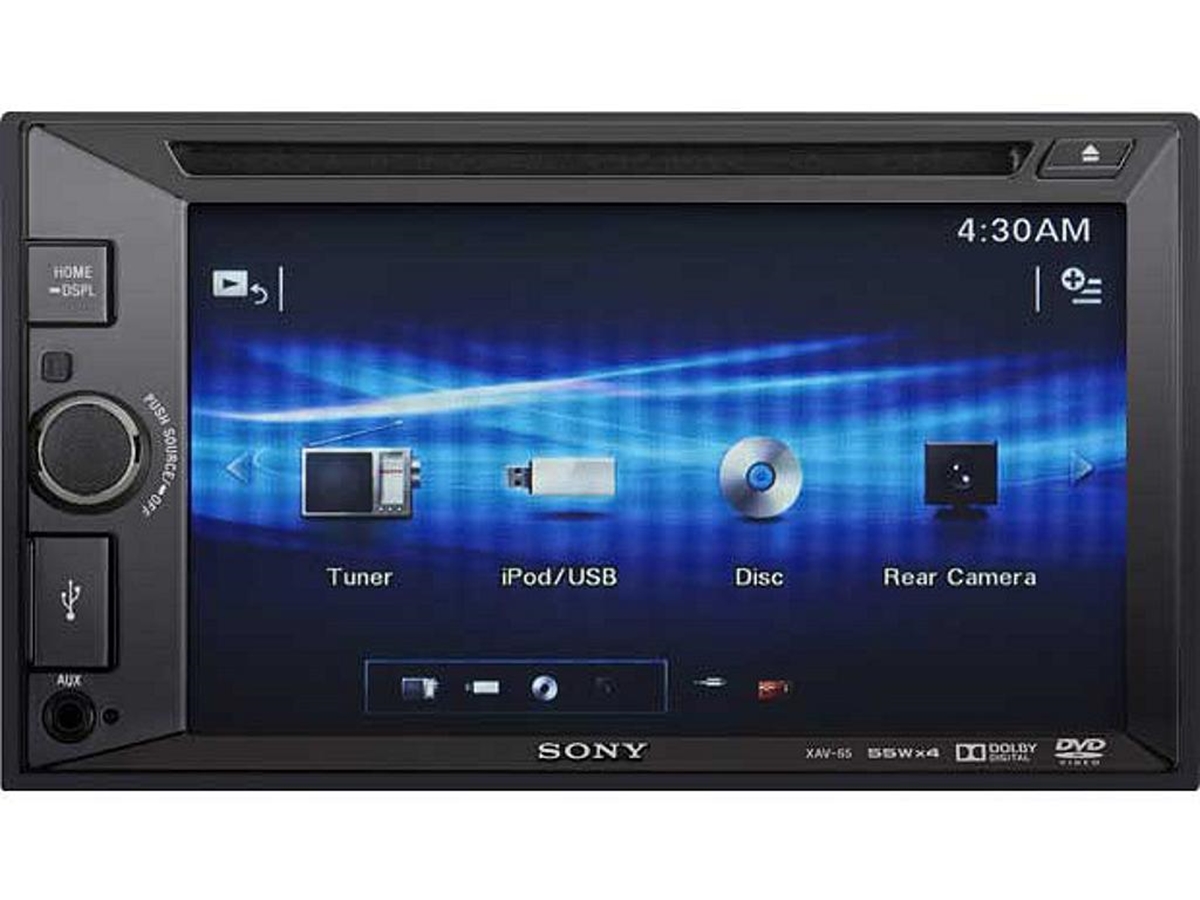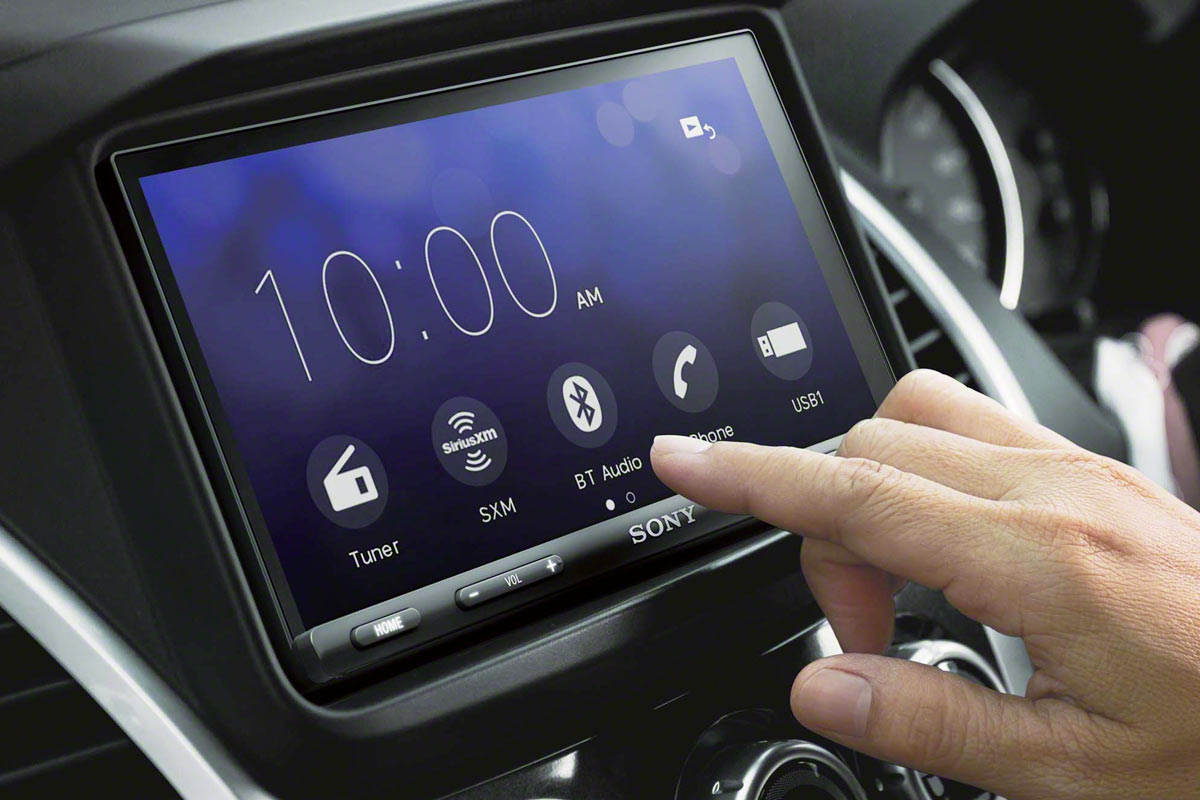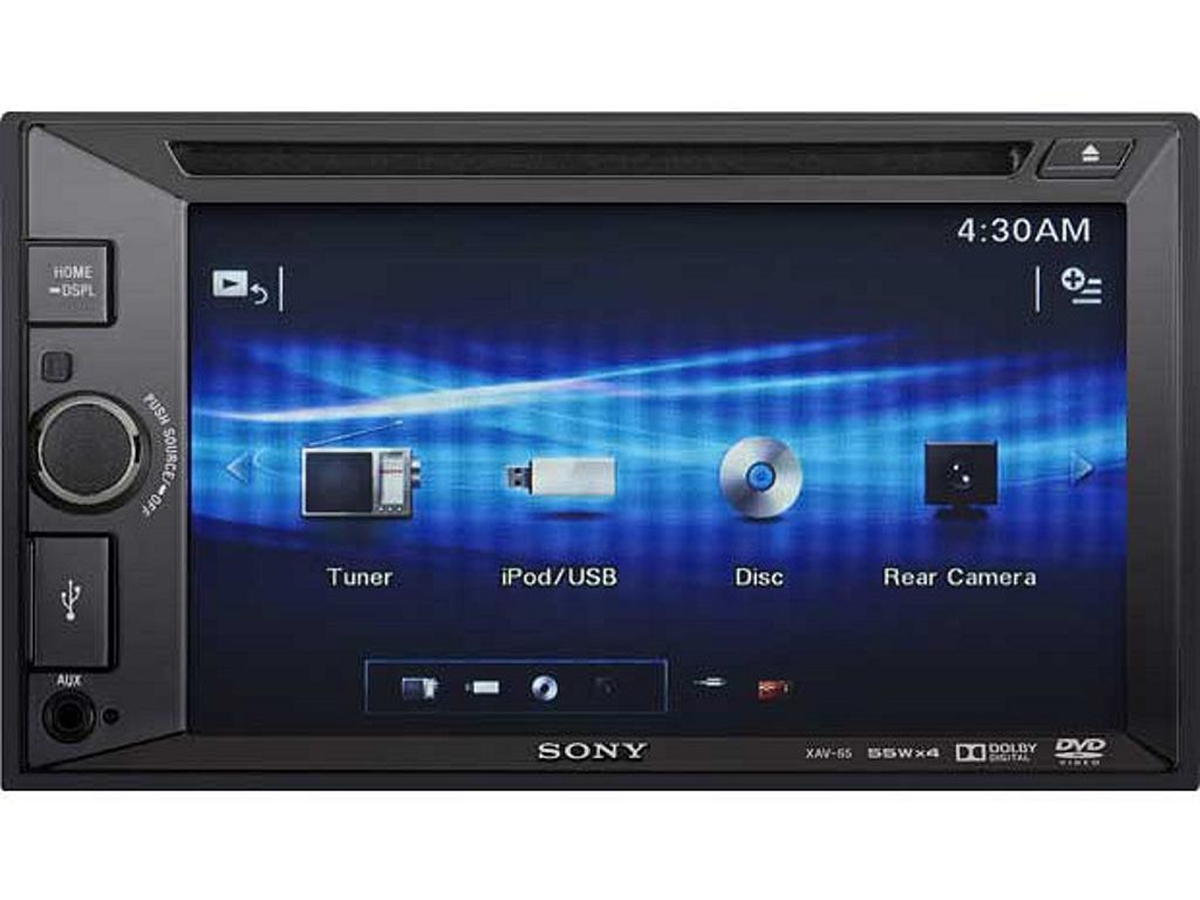Introduction
Wireless CarPlay has revolutionized the way we interact with our cars’ infotainment systems. Gone are the days of bulky and tangled cables, as now you can seamlessly connect your iPhone to your car’s display wirelessly. This innovative technology allows you to access your favorite apps, make calls, send messages, and listen to music, all without the need for physical connections.
Before the advent of wireless CarPlay, you had to connect your iPhone to your car’s infotainment system via a Lightning cable. While this method worked well, it often resulted in cluttered interiors and limited mobility. With wireless CarPlay, you can enjoy the same convenience and functionality, but without the hassle of cables.
Imagine getting into your car, and with just a few taps on your iPhone’s screen, your favorite apps, such as Maps, Music, and Messages, seamlessly appear on your car’s display. You can effortlessly navigate, select songs, and respond to messages, all while keeping your hands on the wheel and your eyes on the road.
Wireless CarPlay provides not only a safer but also a more enjoyable driving experience. It eliminates the need to fumble with cables, allowing you to focus on the road ahead. Additionally, the seamless integration between your iPhone and your car’s infotainment system ensures that you can seamlessly transition from using your phone to using your car’s display without any interruptions.
In this article, we will guide you through the process of setting up wireless CarPlay in your car. We will cover the necessary requirements, step-by-step instructions, and troubleshooting tips to ensure a smooth and hassle-free installation. By the end of this article, you’ll be able to enjoy the convenience and freedom of wireless CarPlay in your vehicle.
What is Wireless CarPlay?
Wireless CarPlay is a feature developed by Apple that allows iPhone users to connect their devices to their car’s infotainment system without the need for a physical cable. It provides a wireless connection between the iPhone and the car, enabling users to access various apps and functions directly on their car’s display.
With Wireless CarPlay, you can seamlessly integrate your iPhone’s functionality into your car’s dashboard. This means you can use navigation apps like Apple Maps or Google Maps, play music from your favorite streaming services, make hands-free phone calls, send and receive messages, and even access Siri, all through your car’s built-in display.
The integration of Wireless CarPlay offers a significant advantage in terms of convenience and safety. Instead of having to handle your iPhone while driving, Wireless CarPlay allows you to keep your hands on the steering wheel and your eyes on the road. By using voice commands or the car’s touchscreen, you can easily control your iPhone’s functions without diverting your attention away from driving.
One of the key benefits of Wireless CarPlay is its ability to seamlessly integrate with your car’s existing infotainment system. The wireless connection ensures a smooth transition between your iPhone and your car’s display, providing a consistent user experience. Whether you have a touch-enabled system or use physical buttons, you can navigate through apps, select songs, and perform other tasks just as you would on your iPhone.
To use Wireless CarPlay, you will need a compatible car model that supports the feature. Many car manufacturers offer Wireless CarPlay as a standard or optional feature in their newer models. Additionally, keep in mind that your iPhone must also support Wireless CarPlay, as older iPhone models may require a wired connection.
Overall, Wireless CarPlay offers an enhanced driving experience by seamlessly integrating your iPhone’s functionality into your car’s dashboard. With its convenience and safety features, it is an excellent addition for anyone who wants to stay connected on the road without compromising their safety and focus.
Benefits of Wireless CarPlay
Wireless CarPlay brings numerous benefits to the table, providing a seamless and convenient user experience while on the road. Here are some of the key advantages of using Wireless CarPlay:
- Wireless Convenience: One of the primary benefits of Wireless CarPlay is the elimination of physical cables. You no longer have to fuss with tangled wires or worry about connecting and disconnecting your iPhone every time you enter or exit your vehicle. With a wireless connection, your iPhone automatically pairs with your car’s infotainment system, providing hassle-free connectivity.
- Hands-Free Operation: With Wireless CarPlay, you can keep your hands on the wheel and your eyes on the road. The integration between your iPhone and your car’s display allows you to control various functions using voice commands or the car’s touchscreen. This hands-free operation not only enhances safety but also ensures a more comfortable and enjoyable driving experience.
- Seamless Integration: Wireless CarPlay seamlessly integrates your iPhone’s functionality into your car’s infotainment system. It’s like having an extended version of your iPhone’s screen right on your dashboard. Whether you want to access navigation apps, listen to music, make phone calls, or send messages, the integration ensures a consistent and user-friendly interface that you’re already familiar with.
- Convenient App Access: With Wireless CarPlay, you have direct access to a wide range of apps available on your iPhone. Popular navigation apps like Apple Maps or Google Maps allow you to get turn-by-turn directions right on your car’s display. Music streaming apps like Apple Music or Spotify let you enjoy your favorite tunes without the need for additional devices. You can even access messaging apps and make hands-free phone calls while on the go.
- Automatic Updates: Wireless CarPlay also offers the advantage of automatic software updates. When Apple releases new iOS updates with improved features or bug fixes, your car’s infotainment system will receive those updates wirelessly and seamlessly. This ensures your CarPlay experience remains up-to-date and optimized without requiring manual firmware updates.
- Wide Range of Car Compatibility: Many car manufacturers now include Wireless CarPlay as a standard or optional feature in their newer models. This means that you have a wide selection of vehicle options across different price ranges that support Wireless CarPlay. Whether you have a luxury sedan or a compact SUV, chances are you can enjoy the benefits of Wireless CarPlay in your vehicle.
Overall, Wireless CarPlay offers convenience, safety, and an enhanced user experience while on the road. With its wireless connectivity, ease of use, and seamless integration, it has become a valuable feature for those who want to stay connected and entertained during their daily commutes or long road trips.
Requirements for Wireless CarPlay
Before you can enjoy the convenience of Wireless CarPlay, there are a few requirements that need to be met. Here are the key prerequisites for setting up and using Wireless CarPlay:
- Car Compatibility: Not all car models support Wireless CarPlay. Check your car’s documentation or contact the manufacturer to confirm if it has built-in support for Wireless CarPlay. Many newer car models from popular manufacturers like BMW, Audi, Ford, and Mercedes-Benz offer Wireless CarPlay as a standard or optional feature.
- iPhone Compatibility: Your iPhone must support Wireless CarPlay in order to use it. Generally, iPhone models from iPhone 5 and newer offer support for Wireless CarPlay. However, it is recommended to check Apple’s official website or your iPhone’s documentation to verify the compatibility of your specific iPhone model. Please note that older iPhone models may require a wired connection to use CarPlay.
- Car Firmware Update: Ensure that your car’s infotainment system is running the latest firmware version. Car manufacturers often release updates to add new features and improve compatibility. Check the manufacturer’s website or contact your car dealership for information on how to update the firmware of your car’s infotainment system.
- Wi-Fi Connectivity: Your car’s infotainment system needs to have built-in Wi-Fi capability to connect with your iPhone wirelessly. Ensure that your car is connected to a stable Wi-Fi network. Some car models may have Wi-Fi built-in, while others require you to connect a compatible Wi-Fi dongle to enable wireless connectivity.
- Bluetooth Pairing: Before setting up CarPlay, make sure your iPhone is paired with your car’s Bluetooth system. This step is necessary to establish a secure and reliable connection between your iPhone and your car’s infotainment system.
By meeting these requirements, you’ll have everything you need to set up and use Wireless CarPlay in your car. If your car or iPhone does not meet the necessary criteria, you may need to consider alternative methods or compatible devices to enable wireless connectivity in your vehicle.
Step 1: Check Car Compatibility
Before setting up Wireless CarPlay, the first step is to ensure that your car is compatible with this feature. Not all car models support Wireless CarPlay, so it’s essential to check your car’s documentation or contact the manufacturer to confirm its compatibility.
Many newer car models from various manufacturers offer Wireless CarPlay as either a standard feature or an optional upgrade. Popular car brands such as BMW, Audi, Ford, Mercedes-Benz, and Porsche often include Wireless CarPlay as part of their infotainment system.
To confirm if your car supports Wireless CarPlay, you can:
- Check the Car’s Documentation: Look for information in your car’s user manual or infotainment system guide. These documents usually mention if the car supports Wireless CarPlay or if it requires additional hardware or software updates.
- Visit the Manufacturer’s Website: The car manufacturer’s website often provides detailed specifications and features for each car model. Look for the specific model and check if Wireless CarPlay is listed as a supported feature.
- Contact the Manufacturer or Dealership: If you’re still unsure, you can reach out to the car manufacturer’s customer support or contact your local dealership. They will be able to verify if your car is compatible with Wireless CarPlay and provide any additional information or assistance you may need.
It’s important to ensure your car’s compatibility with Wireless CarPlay to avoid any disappointment or frustration during the setup process. Knowing whether your car supports this feature will guide you in the next steps of getting wireless CarPlay up and running in your vehicle.
Step 2: Check iPhone Compatibility
After confirming that your car is compatible with Wireless CarPlay, the next step is to check if your iPhone supports this feature. Not all iPhone models offer Wireless CarPlay functionality, so it’s important to verify the compatibility of your specific device.
Generally, iPhone models from iPhone 5 and newer support Wireless CarPlay. However, it’s always a good idea to double-check the official Apple website or consult your iPhone’s documentation to ensure compatibility.
To check if your iPhone supports Wireless CarPlay:
- Visit Apple’s Official Website: Apple provides an official list of compatible iPhone models for CarPlay. Visit the CarPlay section on Apple’s website and look for your specific iPhone model to see if it supports Wireless CarPlay functionality.
- Check Your iPhone’s Documentation: Review the user manual or specifications of your iPhone to see if Wireless CarPlay is listed as a supported feature. This information can often be found on the Apple website or in the documentation that came with your iPhone.
- Look for Wireless CarPlay Icons: On your iPhone, go to the Settings app and look for the CarPlay section. If your iPhone supports Wireless CarPlay, you may see icons or references to wireless connectivity options in this section.
It’s important to ensure that your iPhone is compatible with Wireless CarPlay to take full advantage of this feature. If your iPhone model does not support wireless connectivity for CarPlay, you may need to use a wired connection or explore alternative solutions for wireless connectivity.
Once you have confirmed that your iPhone supports Wireless CarPlay, you can proceed to the next steps to set up and enjoy wireless connectivity between your iPhone and your car’s infotainment system.
Step 3: Update Car Firmware
Before setting up Wireless CarPlay, it’s important to ensure that your car’s infotainment system has the latest firmware installed. Car manufacturers often release firmware updates to add new features, improve compatibility, and address any known issues.
To update your car’s firmware, follow these steps:
- Check the Manufacturer’s Website: Visit the car manufacturer’s official website and navigate to the support or downloads section. Look for firmware updates specific to your car model and infotainment system. Manufacturers often provide detailed instructions on how to download and install firmware updates.
- Contact Your Car Dealership: If you’re unsure about how to update the firmware or if there are any available updates, reach out to your local car dealership. They can provide guidance on the firmware update process and ensure that you have the latest software installed on your car’s infotainment system.
- Follow the Firmware Update Procedure: Once you have downloaded the firmware update, carefully follow the provided instructions to install it on your car’s infotainment system. This typically involves connecting a USB drive to your car’s USB port and initiating the update process through the system’s settings or control interface.
- Wait for the Update to Complete: During the update process, it’s important to be patient and allow the firmware update to finish completely. Do not turn off the car’s engine or disconnect any cables until the update is successfully installed. This may take several minutes, so ensure you have enough time set aside for the update process.
- Confirm Successful Firmware Update: After the update is complete, verify that the firmware has been successfully installed on your car’s infotainment system. Check the system’s settings or consult the manufacturer’s documentation to confirm that you have the latest firmware version installed.
By updating your car’s firmware, you ensure that it has the necessary software enhancements to support Wireless CarPlay and provide a seamless user experience. Keeping your car’s infotainment system up to date will also help prevent compatibility issues and ensure compatibility with future iOS updates on your iPhone.
Once you have successfully updated your car’s firmware, you can proceed to the next steps to establish a wireless connection between your iPhone and your car’s infotainment system for Wireless CarPlay.
Step 4: Connect to Car’s Wi-Fi Network
To set up Wireless CarPlay, you need to connect your iPhone to your car’s Wi-Fi network. This enables the wireless communication between your iPhone and the car’s infotainment system. Follow these steps to connect your iPhone to the car’s Wi-Fi network:
- Ensure Car Wi-Fi is Enabled: In your car’s infotainment system, navigate to the settings or connectivity menu and make sure that Wi-Fi is enabled. This step may vary depending on your car’s make and model. Refer to your car’s user manual or contact the manufacturer for specific instructions on how to enable Wi-Fi.
- Open iPhone Settings: On your iPhone, go to the Settings app from the home screen. Tap on “Wi-Fi” to access the Wi-Fi settings.
- Select Car’s Wi-Fi Network: In the list of available Wi-Fi networks on your iPhone, locate and select the Wi-Fi network associated with your car. This network name is usually specific to your car’s make and model or may be labeled as “CarPlay” or something similar.
- Enter Wi-Fi Password: If prompted, enter the Wi-Fi password for your car’s network. This password is often provided by the car manufacturer or can be found in the car’s documentation. If you’re unsure, consult the manufacturer’s website or contact your car dealership for assistance.
- Wait for Connection: Once you have entered the Wi-Fi password, your iPhone will attempt to connect to the car’s network. Wait for the connection to be established. It may take a few moments for the connection to be established successfully.
- Verify Wi-Fi Connection: To ensure that the connection is successful, look for the Wi-Fi symbol at the top of your iPhone’s screen. It should indicate that your iPhone is connected to the car’s Wi-Fi network.
By connecting your iPhone to your car’s Wi-Fi network, you establish the wireless communication needed for Wireless CarPlay. This enables your iPhone and your car’s infotainment system to exchange information, allowing you to access CarPlay features seamlessly.
Once your iPhone is connected to the car’s Wi-Fi network, you can proceed to the next steps to pair your iPhone with your car and enable Wireless CarPlay.
Step 5: Pair iPhone with Car
After connecting your iPhone to your car’s Wi-Fi network, the next step is to pair your iPhone with your car’s infotainment system. This pairing process establishes a secure connection between your iPhone and your car, allowing for seamless integration and functionality. Follow these steps to pair your iPhone with your car:
- Enable Bluetooth on iPhone: Open the Settings app on your iPhone and navigate to the Bluetooth settings. Ensure that Bluetooth is enabled.
- Enable Bluetooth on Car: In your car’s infotainment system, navigate to the Bluetooth settings or pairing menu. Enable Bluetooth if it is not already turned on. Refer to your car’s user manual or contact the manufacturer for specific instructions.
- Start Pairing Process: On your iPhone, in the Bluetooth settings, look for the name of your car’s Bluetooth device or a similar identifier. Tap on it to initiate the pairing process.
- Confirm Pairing Code: If prompted, confirm the pairing code displayed on your car’s infotainment screen matches the one displayed on your iPhone. This code ensures a secure connection between the devices. Tap on “Pair” or “Confirm” to proceed with the pairing process.
- Wait for Pairing: Once the pairing process is initiated, wait for the devices to establish a connection. This may take a few moments, and you may see a confirmation message on both your iPhone and your car’s infotainment system when the pairing is successful.
- Verify Connection: After the pairing is complete, ensure that your iPhone is successfully connected to your car’s Bluetooth. Look for the Bluetooth symbol at the top of your iPhone’s screen to confirm the connection.
By pairing your iPhone with your car’s infotainment system via Bluetooth, you enable a smooth and reliable connection between the two devices. This pairing allows for seamless communication and integration, making it possible to access Wireless CarPlay features directly from your car’s display.
Once your iPhone is paired with your car, you can proceed to the next steps to enable Wireless CarPlay and start enjoying its benefits.
Step 6: Enable Wireless CarPlay
After successfully pairing your iPhone with your car’s infotainment system, the next step is to enable Wireless CarPlay. This step allows your iPhone to connect wirelessly to your car’s display, providing easy access to CarPlay features. Follow these steps to enable Wireless CarPlay:
- Ensure CarPlay is Supported: Check your car’s documentation or contact the manufacturer to confirm that your car supports Wireless CarPlay. Certain older car models may require a wired connection for CarPlay.
- Access CarPlay Settings: In your car’s infotainment system, navigate to the settings or connectivity menu. Look for the CarPlay settings and select it to access the CarPlay configuration options.
- Select Wireless Connection: Within the CarPlay settings, choose the option to enable wireless connection or set up Wireless CarPlay. This option may be labeled differently based on your car’s make and model.
- Connect to Wireless CarPlay: On your iPhone, go to the Home screen and ensure that Wi-Fi and Bluetooth are enabled. Your iPhone should automatically detect the available Wireless CarPlay connection from your car’s infotainment system.
- Choose CarPlay from iPhone: When your iPhone detects the Wireless CarPlay connection, you may see a prompt on your iPhone’s screen asking if you want to connect to CarPlay. Tap on the CarPlay prompt and select your car from the available options.
- Allow Access and Permissions: Follow the on-screen instructions on your iPhone to allow access and permissions for CarPlay. This step ensures a secure and seamless connection between your iPhone and your car’s infotainment system.
- Wait for Connection: Once you have completed the setup process, wait for your iPhone to establish a connection with your car’s infotainment system. This may take a few moments, and you may see a confirmation message on both your iPhone and your car’s display when the connection is successful.
Enabling Wireless CarPlay allows you to connect your iPhone to your car’s infotainment system wirelessly. With this setup, you can enjoy the convenience of accessing your favorite apps, making calls, sending messages, and more, directly from your car’s display without the need for physical connections.
Once Wireless CarPlay is enabled, you can move on to the final step to test and ensure that your Wireless CarPlay setup is functioning correctly.
Step 7: Test Wireless CarPlay
After enabling Wireless CarPlay, it’s time to test the setup to ensure that everything is working smoothly. This step allows you to verify the connection and functionality of Wireless CarPlay. Follow these steps to test your Wireless CarPlay setup:
- Start Your Car: Turn on your car’s engine and ensure that your car’s infotainment system powers on correctly.
- Ensure Bluetooth and Wi-Fi are Enabled: On your iPhone, ensure that both Bluetooth and Wi-Fi are enabled. This allows your iPhone to connect to your car’s infotainment system wirelessly.
- Connect Wirelessly: Your iPhone should automatically connect to your car’s infotainment system wirelessly once you start the car and have both Bluetooth and Wi-Fi enabled.
- Access CarPlay Interface: On your car’s infotainment display, select the CarPlay icon or navigate to the CarPlay interface. This should bring up the familiar CarPlay interface on your car’s display.
- Test App Functionality: Test various CarPlay features and functions, such as making phone calls, sending messages, using navigation apps, or listening to music. Ensure that the apps respond correctly and the interaction between your iPhone and your car’s display is seamless.
- Check Audio and Visual Output: Verify that audio and visual outputs are functioning correctly. Ensure that the sound comes through your car’s speakers and that the display shows the expected information from the CarPlay apps.
- Test Siri Integration: Test Siri functionality by using voice commands to make calls, send messages, ask for directions, or perform other tasks. Ensure that Siri responds accurately and performs the requested actions.
By testing Wireless CarPlay, you can confirm that the setup is functioning as expected. Any issues or inconsistencies can be addressed or troubleshooted accordingly. If you encounter any problems during the testing process, refer to the troubleshooting section or contact the car manufacturer or Apple for further assistance.
Once you are satisfied that your Wireless CarPlay setup is working well, you can enjoy the convenience and seamless integration of Wireless CarPlay in your car, allowing you to stay connected and entertained while on the road.
Troubleshooting Wireless CarPlay Issues
While Wireless CarPlay generally provides a seamless and convenient user experience, there may be instances where you encounter issues or face challenges with the setup. Here are some troubleshooting steps to help resolve common Wireless CarPlay issues:
- Restart Your iPhone: Begin by restarting your iPhone. This can help resolve minor software glitches that may be affecting the wireless connection or CarPlay functionality.
- Check Car’s Firmware: Ensure that your car’s infotainment system is running the latest firmware version. Visit the manufacturer’s website or contact the dealership for instructions on how to update the car’s firmware.
- Reset Car’s Infotainment System: If you’re facing persistent issues, try resetting your car’s infotainment system to its factory settings. Consult your car’s user manual or contact the manufacturer for specific instructions on how to perform a system reset.
- Check Wi-Fi Network: Verify that your car’s Wi-Fi network is stable and functioning properly. Make sure that you have a strong and reliable connection to the car’s Wi-Fi network.
- Reset Network Settings on iPhone: Resetting the network settings on your iPhone can help resolve any underlying Wi-Fi or Bluetooth issues. Go to the iPhone’s Settings app, navigate to General > Reset, and select “Reset Network Settings.”
- Forget Car’s Bluetooth and Wi-Fi: On your iPhone, go to the Bluetooth and Wi-Fi settings and forget the connections associated with your car. Then, re-establish the connections and attempt to connect to the car’s Wi-Fi network again.
- Remove Restrictions: In your iPhone’s settings, ensure that there are no restrictions or limitations set for CarPlay. Check the “Screen Time” settings and adjust any restrictions that may be affecting CarPlay.
- Update iPhone Software: Check for any available software updates for your iPhone and update it to the latest iOS version. Software updates often include bug fixes and improvements that can enhance CarPlay’s performance.
- Try Wired Connection: If all else fails, consider using a wired connection between your iPhone and the car’s infotainment system. This can help determine if the issue lies with the wireless connection or not. Use a Lightning-to-USB cable to connect your iPhone to the car’s USB port.
If you continue to experience issues with your Wireless CarPlay setup, it may be helpful to contact the car manufacturer’s customer support or Apple support for further assistance. They can provide specific troubleshooting steps based on your car’s make and model or your iPhone’s specific configuration.
By following these troubleshooting steps, you can resolve common issues and ensure that your Wireless CarPlay setup functions properly, allowing you to enjoy a seamless and connected driving experience.
Conclusion
Wireless CarPlay brings a new level of convenience and integration to our driving experience. By eliminating the need for cables and enabling wireless connectivity between our iPhones and car’s infotainment systems, Wireless CarPlay allows us to seamlessly access our favorite apps, make calls, send messages, and navigate, all while keeping our hands on the steering wheel and our focus on the road.
In this guide, we have covered the necessary steps to set up Wireless CarPlay in your car. We started by checking the car and iPhone compatibility, ensuring that both devices support wireless connectivity. We then updated the car’s firmware to ensure compatibility and functionality. Next, we connected our iPhone to the car’s Wi-Fi network and paired it with the car’s infotainment system via Bluetooth. We enabled Wireless CarPlay and tested the connection by accessing CarPlay features and ensuring proper audio and visual output. Additionally, we provided troubleshooting tips to help resolve common issues that may arise during the setup or usage of Wireless CarPlay.
It’s important to keep in mind that the process of setting up Wireless CarPlay may vary slightly depending on your car’s make and model, as well as the specific software versions on your iPhone. Therefore, it’s recommended to consult your car’s documentation and the official guidelines from Apple for detailed instructions.
With Wireless CarPlay, you can enhance your driving experience by staying connected, entertained, and informed without compromising safety. Whether you’re using navigation apps to find your way, enjoying your favorite music and podcasts, or effortlessly managing your calls and messages, Wireless CarPlay offers an intuitive and seamless integration between your iPhone and your car’s infotainment system.
By following the steps outlined in this guide and troubleshooting any issues that may arise, you can enjoy the convenience of Wireless CarPlay and unlock a world of possibilities right at your fingertips while on the road.







